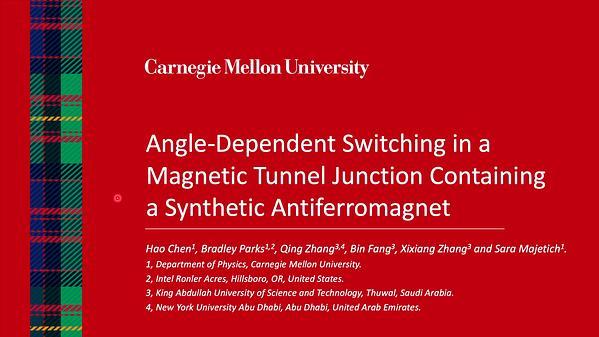
Premium content
Access to this content requires a subscription. You must be a premium user to view this content.

technical paper
Unconventional spin orbital torque enhanced magnetization switching by interface oxidation in CuPt/CoPt bilayer
We study the current-induced spin-orbit torque (SOT) switching and out-of-plane (OOP) effective field in a CuPt/CoPt heterostructure with interface oxidation. By introducing the oxidized copper at the interface, we found their switching abilities show remarkable improvement which is attributed to an unconventional OOP effective field. The OOP effective field is three times stronger than that without oxide treatment. Our observation identified the important role of the interface oxidation in the SOT process of CuPt/CoPt heterostructure.
The spin current can trigger a torque in ferromagnetic (FM) layer to electrically manipulate the magnetization. It is promise for an Magnetoresistive random-access memory (MRAM) device due to its endurance and speed 1-3. To efficiently manipulate the magnetism in MRAM, the key point is to increase the spin accumulation in ferromagnetism (FM). In additiona, for traditional SOT devices, the external magnetic field is required to break the symmetry. Thus, the field-free switching has attracted attention.
We believe there could be a different path to enhance the field-free magnetization switching from material perspective. Previously, we studied the symmetry dependent field-free SOT switching in a CuPt/CoPt heterostructure 4. The intrinsic broken mirror symmetry related SOT process is also reported in WTe2 5. The L11 CuPt deposited on SrTiO3 (111) substrate possesses a 3-fold symmetry, as shown in figure 1. The field-free switching emerges when the current is injected along the low symmetry axes (1-10 and the other two equivalent axes).
In this work, we show the 3-fold symmetry unconventional out-of-plane torque is from the CuPt and it can be manipulated by the oxidation at the surface. Comparing to unoxidized sample, the oxidized sample approve a much larger switching ratio, since the large out-of-plane torque as the figure 2 shown. Regarding the oxidation degree of the copper is controllable by the time of oxidation treatment, thus a tuneable and efficient MRAM based on SOT induced magnetization switching is promised.
References 1 K. Garello et al., 2018 IEEE Symposium on VLSI Circuits., p.81-82 (2018).
2 F. Oboril, R. Bishnoi, M. Ebrahimi and M. B. Tahoori, IEEE Transactions on Computer-Aided Design of Integrated Circuits and Systems., Vol. 34.3, p.367-380 (2015).
3 G. Prenat et al., IEEE Transactions on Multi-Scale Computing Systems., Vol. 2.1, p.49-60 (2016).
4 L. Liu et al., Nat. Nanotechnol., Vol. 16.3, p.277-282 (2021).
5 MacNeill, D., Stiehl, G., Guimaraes, M. et al., Nature Phys., Vol. 13, p.300–305 (2017).


